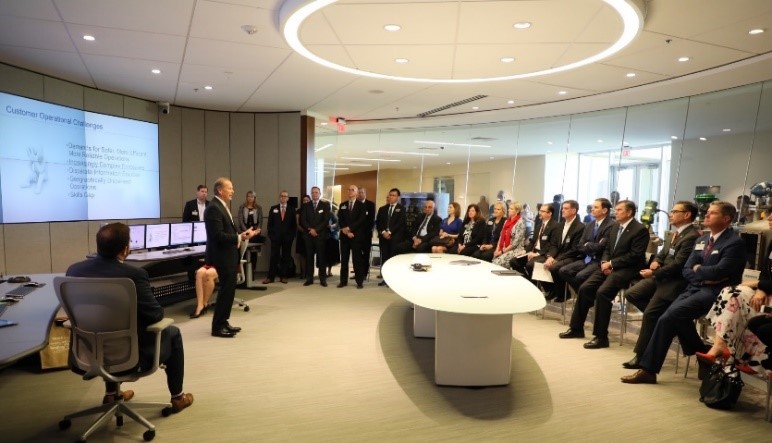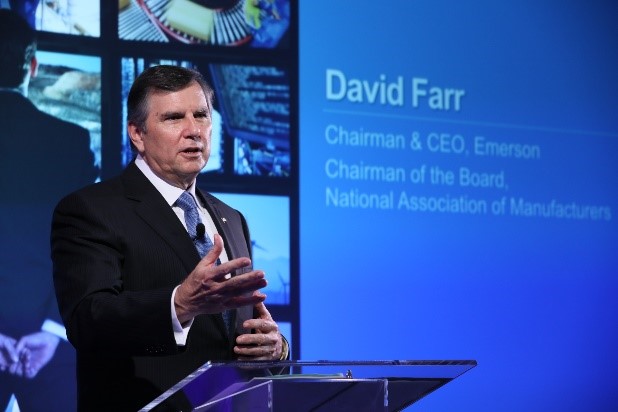While traditional manufacturing in the U.S. has certainly had to contend with ups and downs over the last few decades, the good news is that the modern industry is alive, well and kicking. In fact, right now, it is driving a huge innovation revolution across the U.S. This was the strong, take-away message to policy makers and elected officials from the National Association of Manufacturers (NAM) at the start of its annual tour last week in Round Rock, Texas.

The evolution of manufacturing
I was honored to represent Dell EMC at this kick-off event, which was hosted by Emerson Chairman and CEO David Farr, a good friend and the new chair of the NAM Board. However, some of you may be wondering why start a manufacturing tour in Central Texas? When you think of the Austin area – also known as the Silicon Hills – the image of a typical, middle-America factory town doesn’t exactly spring to mind.
And yet, it’s right at the heart of an evolution in manufacturing. There is a digital transformation underway in this industry and there are hundreds of businesses in Central Texas – from Emerson and Dell EMC to software companies and small start-ups – who are helping to usher in a new era in modern manufacturing. Austin has numerous examples of companies working together to modernize manufacturing in the U.S. but the same exciting story is being emulated throughout the country.
Painting a picture of modern manufacturing
So, what does modern manufacturing look like? Manufacturing is learning from other industries that have been successful in adopting new approaches to technology to gain a competitive edge. Instead of resisting technology, manufacturing is now embracing ways to do things faster, smarter and better. Today’s factories now have the IT tools to collect, analyze and act on data in real time to optimize their operations, lower costs, increase throughput and gain a competitive edge.
Let me give you some practical examples. Energy producers are reducing downtime and improving profitability by remotely monitoring critical equipment (think of a refinery or an off-shore oil rig) with sensors, edge gateways and sophisticated cloud-hosted analytics tools. This reduces potential employee exposure to hazardous conditions while helping the company to leverage expertise wherever it may exist. In other industries, such as automobile manufacturing, factories are using technology to do real-time testing and quality control during the assembly process to make adjustments and prevent potential problems before they occur.
Lines blurring between IT and factory systems
So, as you can see, it’s no longer a case of information technology (IT) being confined to the data center and the office with operational technology (OT) (factory systems) on the manufacturing floor. We’re now seeing the lines blur between IT and OT with embedded devices and sensors connecting and talking to previously siloed systems within a manufacturing facility. We’re experiencing how the Industrial Internet of Things – IIoT – can help customers get a more accurate and holistic picture of their performance.
Partners who can add value
Of course, harnessing all this data and connecting all of the parts and players requires a complex ecosystem of experienced technology partners and a workforce with the skills needed to succeed in today’s knowledge-based economy. This is where companies like Emerson and Dell EMC can add expertise and value. Dell EMC has enjoyed a long and fruitful partnership with Emerson over the years, from developing data center standards and collaborating on the launch of multiple OEM products all the way through to the solutions that power automation processes on the factory floor. Today, we are working together to help manufacturing customers harness the power of the Internet of Things.

Using technology to make manufacturing more competitive
I believe that modern manufacturing has a huge role to play in the global economy and can continue to positively impact the lives of millions of American families. However, we need to make manufacturing more competitive. We need to use technology to reinvent processes and strengthen the industry’s ability to hire workers with the skills needed in this digital age. We can absolutely enable new jobs if we have technology and manufacturing working together in tandem. Above all else, manufacturing needs to attract our best and brightest young people. The industry offers a lifelong, rewarding career with the chance to design and build a new high-tech, high-touch future. It’s exciting stuff!
Global competition and increasing customer demands are certainly changing the face of manufacturing as we know it, but I think we’re all ready to embrace the challenge head-on. Dell EMC is proud to contribute to the digital transformation of this vital industry. Join the conversation and be part of the solution. I would love to hear your views and am happy to answer your questions. I also invite you to check out the NAM’s “Creators Wanted” video, which features two Dell EMC team members and highlights the many facets of a career in modern manufacturing.